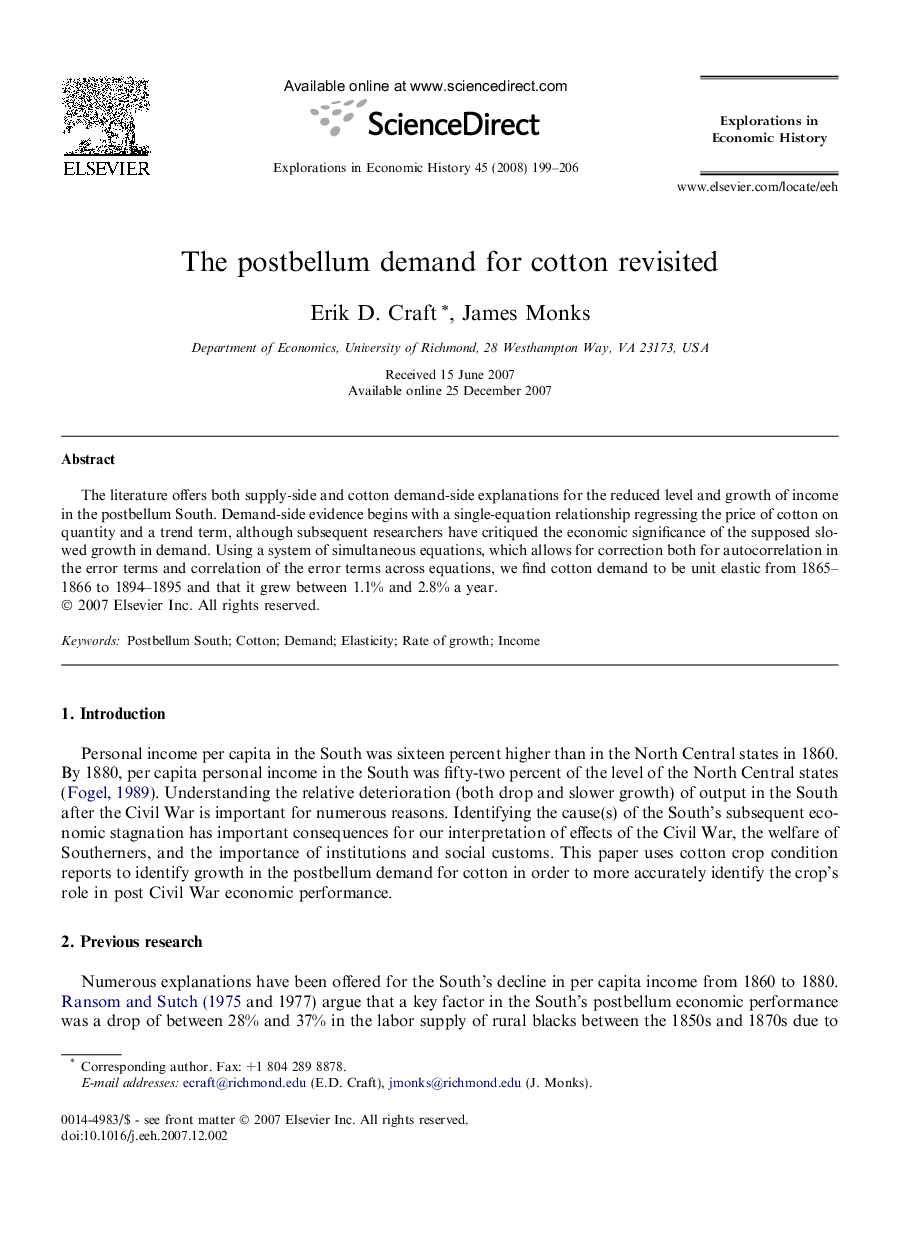| Article ID | Journal | Published Year | Pages | File Type |
|---|---|---|---|---|
| 5069203 | Explorations in Economic History | 2008 | 8 Pages |
Abstract
The literature offers both supply-side and cotton demand-side explanations for the reduced level and growth of income in the postbellum South. Demand-side evidence begins with a single-equation relationship regressing the price of cotton on quantity and a trend term, although subsequent researchers have critiqued the economic significance of the supposed slowed growth in demand. Using a system of simultaneous equations, which allows for correction both for autocorrelation in the error terms and correlation of the error terms across equations, we find cotton demand to be unit elastic from 1865--1866 to 1894--1895 and that it grew between 1.1% and 2.8% a year.
Related Topics
Social Sciences and Humanities
Arts and Humanities
History
Authors
Erik D. Craft, James Monks,
